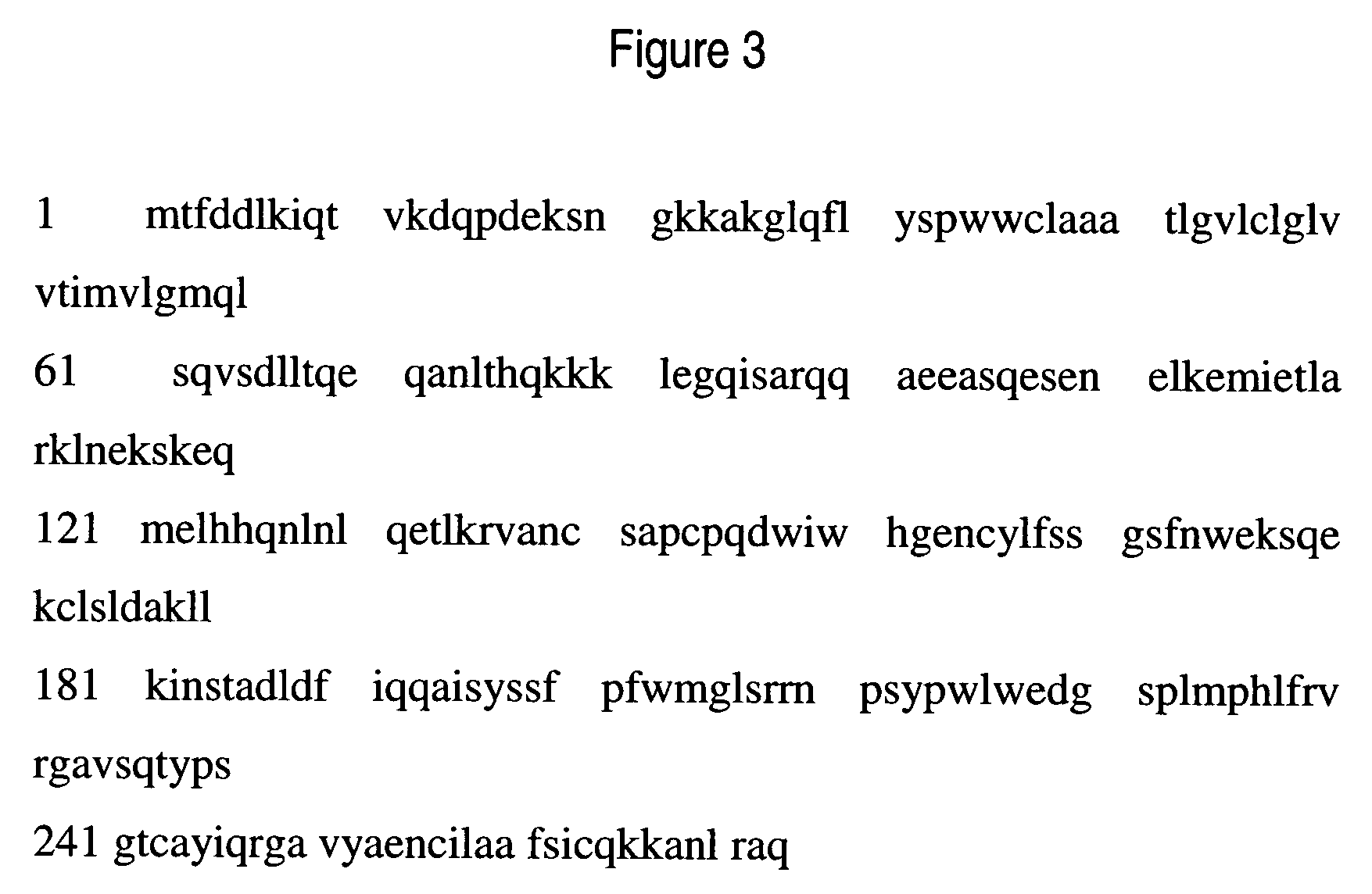Heat shock protein as a targeting agent for endothelium-specific in vivo transduction
a technology of endothelium-specific and in vivo transduction, which is applied in the direction of peptides, drug compositions, and treatments, etc., can solve the problems of destroying the three-dimensional structure or unfolding of the cell's proteins, killing the cell, and non-specificity of the peptides for targeting the contrast agent to the cells of interes
- Summary
- Abstract
- Description
- Claims
- Application Information
AI Technical Summary
Benefits of technology
Problems solved by technology
Method used
Image
Examples
example 1
[0141](H) will be covalently attached through a 4-acylphenylene group (L) to flourescein (S) using standard techniques known in the art. The ability of the complex to bind to cells will be tested using a cell line. The complex will be incubated with the cells and then washed. The cells will then be imaged using standard techniques.
[0142]Additionally, the ability of HSP fragments to internalize the signal will be demonstrated through the realization of the dye internalized to the cell as opposed to being on the cell surface as demonstrated through fluorescence imagery. Fragments will be tagged with pH sensitive dyes such as CypHer (Amersham Biosciences, Pscataway, N.J.) that will fluoresce upon internalization into cells.
example 2
[0143](H) will be covalently attached through Lys-Lys-Gly-Gly (L) to 18F (S) using standard techniques known in the art. The complex will then be delivered in vivo through injection to 5 control and five diseased ApoE− / − mice, available from Jackson Laboratories. Following delivery the mouse will be scanned using standard PET techniques. The diseased mouse will show specific binding along affected arterial walls.
[0144]In a second stage, the treatment with the complex will be repeated to illustrate the build up of imaging agent allowing for greater resolution of affected areas.
example 3
[0145](H) will be covalently attached through DTPA (L) to taxol (T) using standard techniques known in the art. The ability of the complex to bind to cells will be tested using a cell line. The complex will be incubated with the cells and then washed. The ability of HSP fragments to internalize the signal will be demonstrated through the realization of the dye internalized to the cell as opposed to being on the cell surface as demonstrated through fluorescence imagery.
PUM
| Property | Measurement | Unit |
|---|---|---|
| flow rates | aaaaa | aaaaa |
| flow rates | aaaaa | aaaaa |
| superparamagnetic | aaaaa | aaaaa |
Abstract
Description
Claims
Application Information
 Login to View More
Login to View More - R&D
- Intellectual Property
- Life Sciences
- Materials
- Tech Scout
- Unparalleled Data Quality
- Higher Quality Content
- 60% Fewer Hallucinations
Browse by: Latest US Patents, China's latest patents, Technical Efficacy Thesaurus, Application Domain, Technology Topic, Popular Technical Reports.
© 2025 PatSnap. All rights reserved.Legal|Privacy policy|Modern Slavery Act Transparency Statement|Sitemap|About US| Contact US: help@patsnap.com



